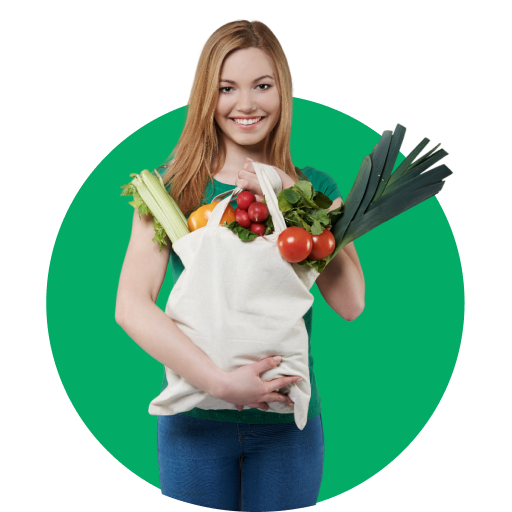The internet food delivery sector is rapidly growing and expanding. There are numerous prospects for firms to build their own online food delivery marketplace as a result of the sector’s amazing growth.
According to an Uber estimate, the European food delivery business is predicted to increase 10% per year to $25 billion by 2023. Customers’ acceptance of online meal delivery services has accelerated as a result of technological improvements, which has prompted some entrepreneurs to migrate to the online food delivery app development.
One of the first steps in beginning a new firm is to strategize the business strategy.
Types Of On-Demand Food Delivery Business Model
Two major food delivery business models dominate the online meal ordering and the delivery sector. The majority of the most well-known meal delivery companies follow one of the models listed below.
- Aggregator Business Model
As the name implies, aggregator-based internet meal delivery firms allow several eateries to register and operate on the same food delivery platform. In this business model, services from several restaurants are gathered and integrated onto a single platform. The platform serves as a go-between for customers and restaurants in this arrangement.
Just Eat, Delivery Hero and Uber Eats are just a few of the big names in the food delivery sector who have embraced the aggregator model, and their development has been phenomenal. If you want to start a meal delivery company like Just Eat or Delivery Hero, the aggregator marketing strategy is the way to go
- Order & Delivery Model
In this business model, there are three primary players: the admin or platform owner, retailers or restaurateurs, and a courier service provider. Food delivery is handled by a third party under this business model. The delivery company provider is typically a courier or logistics firm that works with the owner to deliver food to customers. The delivery company provider determines how much it costs to deliver an order.
Advantages
- Businesses that do not wish to invest in a delivery fleet might benefit greatly from using this meal delivery business model.
- The platform owner or administrator forms a partnership with a courier service and delegates all meal delivery functions to it.
- The website owner does not have to worry about managing deliveries because they are handled by a third-party logistics service.
- The admin may also ensure on-time and effective food delivery practices because the third-party logistics business is completely focused on providing delivery.
Challenges
- The most difficult difficulty for firms using the order and delivery business model is synchronizing the delivery process with other operations on the food delivery platform, as well as onboarding numerous delivery agents from the delivery company.
- Integrated Business Model
The integrated food delivery strategy is flexible and the most well-liked business model in the sector. In this setup, both the administration and the eateries may control delivery.
Many restaurants are seeking a method to make their menus available online and many already use their delivery services.
Such businesses can easily be served by online meal ordering platforms that follow the integrated concept.
Advantages
- This meal-delivery revenue model would assist the platform owner in overcoming the risks associated with starting a new company.
- The integrated strategy allows restaurants to participate in the food delivery app development business whether or not they have a delivery fleet. This economic model allows for a larger number of food outlets to join the platform, increasing the number of dishes and restaurants available to clients.
Challenges
- The key difficulty for food delivery businesses using an integrated model is to streamline delivery operations and distribute delivery of each order depending on the restaurant’s fleet availability.
- To address this issue, business owners should seek a feature-rich online meal delivery system that allows administrators to quickly allocate delivery control to restaurants.
- Inventory Business Model
The online food service performs everything in-house under the inventory model. There is only a single entity involved in this situation. Everything is handled by the food delivery service, from the launch of the food delivery app through the preparation of orders and delivery of meals to customers. The platform owner is in charge of the entire value chain.
Due to the food delivery business model, multiple businesses cannot sell their services on a single platform. The order is prepared in the company’s centralized kitchen and delivered by a courier service that the company has engaged. As a result, the proprietor of a food delivery firm may readily monitor the food quality.
Advantages
- The key benefit of using the inventory approach is that you won’t need to use a third-party food delivery.
- The inventory model is best for businesses with a chain of restaurants in a city and their delivery fleet that want to expand their online presence.
- Customers who want to place online orders from their restaurants can use a website or an online food platform that such firms can develop for their restaurant branches.
- They could save commission paid to the third-party platform and also have complete control over the overall client experience as a result of doing so.
Challenges
- The biggest disadvantage of food delivery firms based on the inventory model is high operational costs. It’s also tough for the culinary staff to attend to both online and dine-in orders at the same time.
- A food delivery application that allows the business owner to handle both offline and online operations should be chosen.
How Food Delivery Business Works?
You should spend a significant amount of time completing a market analysis before beginning an internet meal delivery business. Making well-informed decisions early on in the process of launching a business is critical. You must be informed of the methods used by the existing market leaders to provide additional value to the customer.
We’re explaining the product delivery through the responsibilities performed by various participants in managing the food delivery to assist you to gain a better knowledge of the workflow included in the integrated meal delivery business model.
- Delivery Agent
- The delivery agents who are in the restaurant’s delivery range are notified of the incoming orders.
- The order status is automatically updated to ‘In-Preparation’ after it is accepted by a delivery person.
- After getting news that the order is ready for pickup, the appointed delivery team picks it up.
- The status of the order can then be changed to ‘Order picked up’ by the delivery agent.
- The food delivery app records the delivery person’s route as he or she sets out now to deliver the food to the consumer.
- When the delivery person has traveled half the distance, the system notifies the consumer through an in-app notification that “your order is on the way.”
- The delivery person updates the order status to ‘Delivered’ after delivering the order.
- Restaurant
- For the restaurant’s delivery agents, the merchant registers an account
- To manage order deliveries, the merchant allows the self-delivery option.
- The merchant determines the delivery cost for deliveries made by the restaurant’s delivery agents.
- Every restaurant owner establishes a delivery range for his or her establishment.
- When a restaurant receives an order, the customer’s order status is changed to “Accepted.”
- The restaurant then prepares the order and marks it as ‘Ready for Pick-Up.’
- If no delivery crew accepts the order during broadcasting, the restaurant owner is responsible for delegating the order to a specific delivery agent.
- Admin
- Admin establishes an account for himself and his delivery agents.
- Restaurant delivery service can be enabled or disabled by the administrator.
- The delivery charges for deliveries made by the admin’s delivery agents are established by the admin.
- The order is disseminated to all delivery agents within the restaurant’s delivery radius.
- If any delivery person refuses to take the order, Admin can assign it to any delivery agent.
- Customers
- Customers can get regular updates on the status of their orders.
- Customers may also track their orders in real-time using the majority of online meal delivery options.
Benefits Of Having an On-Demand food delivery app
The following step is to select a workable multi-restaurant delivery software after you’ve chosen the food delivery business model that best suits your needs as a business and enables you to accomplish the stated business goals.
The integrated model, which we covered before in this blog, enables your food delivery service to effortlessly meet the various needs of restaurants. As a result, we advise you to select a strong and cutting-edge solution like
- Hassle-Free Management System
Simplifying delivery performance management is one of the main issues facing integrated online food delivery firms because doing so can be difficult when both restaurants and the admin are engaged. With its sophisticated functionalities, The admin is informed when a restaurant chooses to allow the self-delivery feature on the portal. As a result, when an order is placed, the admin can determine whether the meal will be brought by a representative from the restaurant or by one of their delivery personnel.
- Real-Time Delivery Tracking
Creating a food delivery app helps in getting the live update of the ordered food. Users can get to know the whole process update on their device by just keeping their eye on the device. From getting the food in process of baking to getting it ready and picked up by the delivery partner everything gets updated on time by the restaurant owner or the delivery partner as well.
- Multiple Payment Gateways
Gives multiple payment options to the users. The user can pay for the order online or by cash according to their choice. Let the user pay by debit card and credit card. The most important thing is that they are providing a secure payment method by assuring the security of the information of the users for their card and bank details.
- Larger Customer Base
On-demand delivery aids firms in connecting with a broad customer base that includes both domestic and foreign customers, unlike traditional brick and mortar retail stores.
- Understand Customers Demand
These deliveries make use of cutting-edge technologies like machine learning and business intelligence to assist firms in understanding consumer trends and buying behaviors. The likelihood of cross-selling and up-selling products increases as a result.
Wrapping Up!
It’s reasonable to claim that the marketing strategy you select has a big impact on how your company grows because it determines how your company will operate. Therefore, picking the ideal meal delivery business strategy for your organization is crucial. Before choosing the business model and the food delivery solution, you must take into account elements like consumer convenience, alignment with your business objectives, and the extent of technology improvements. All you have to do is hire the app development company that can help you to give you the project ode in no time with excellent work.



